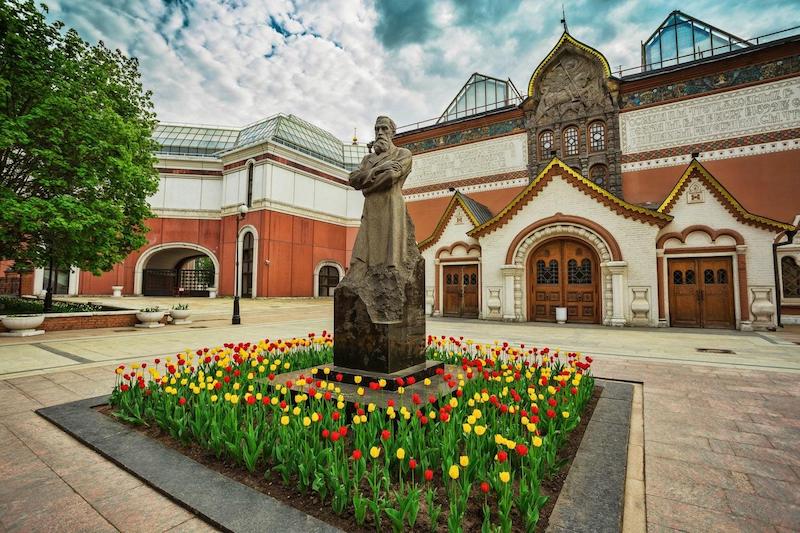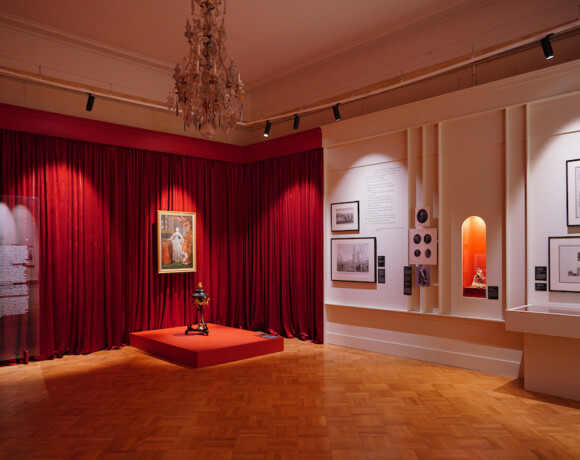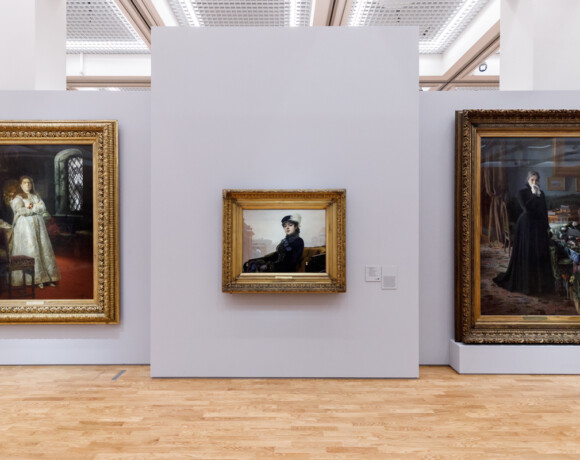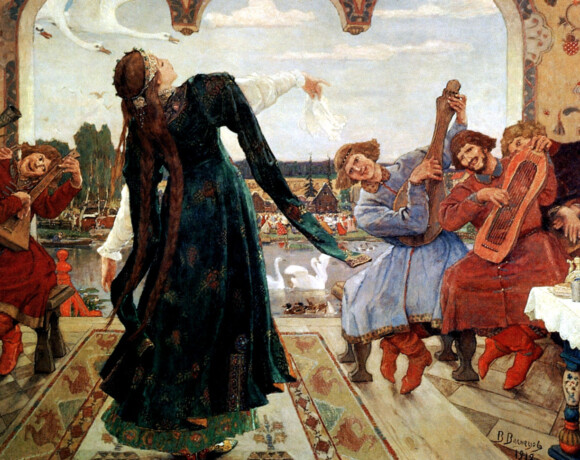On August 15, 1893, the Tretyakov Gallery was opened to the public with the name “Pavel and Sergei Tretyakov City Art Gallery”
Версия на русском языке тут
History of the building
Family Tretyakovs bought house in Lavrushinsky lane in 1851. But the history of this possession can be traced back to the end of the XVII century. The stone chambers were constructed here already at that time and were rebuilt over the following centuries.
In 1856, P. M. Tretyakov purchased the first two paintings by Russian artists – Vasily Khudyakov’s “Finnish Smugglers” and Nikolai Schilder’s “Temptation”, which marked the beginning of famous collection. After a while, there was not enough space for the constantly growing collection, and in 1872 Pavel Mikhailovich attached an additional building to the south-western corner of the main house, where he placed his gallery. As the collection grew in the 1880s, designed by architect A. S. Kaminsky, the “family” architect of the Tretyakovs (Alexander Stepanovich was married to the daughter of Sergei Mikhailovich Tretyakov), in order to expand the exhibition space, several more buildings were built, including the one along Maly Tolmachevsky Lane. At the same time, a new fence was made with a front entrance from Lavrushinsky Lane.
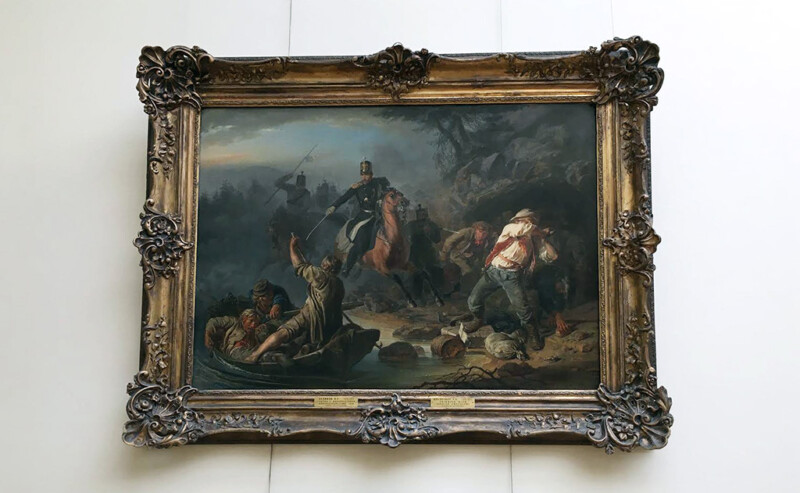
Vasily Khudyakov
“Skirmish with Finnish smugglers”
1853
In 1892, P. M. Tretyakov transferred his collection to the city. The transfer of the Pavel and Sergei Tretyakov Art Gallery to Moscow was an event of great importance. The gift was grandiose in scale: it included 1902 art works. The Russian part included 1287 paintings, sketches and sketches in oil, 518 drawings, 4 marble and 5 bronze and terracotta sculptures. The foreign part consisted of 75 paintings, 8 drawings and 5 Tanagra statuettes. The uniqueness of the gift for the history of Russian culture also lay in the fact that such donations, as a rule, were made after the death of testators. In this sense, Tretyakov’s intravital gift is a rare exception in the history of Russian artistic culture. After his death in 1899-1900, Tretyakov’s apartment building was also rebuilt and adapted to the needs of the gallery. And two years later, the buildings along Lavrushinsky Lane were united by a new facade designed by the artist V. M. Vasnetsov, it was the moment when the familiar appearance of the Tretyakov Gallery appeared.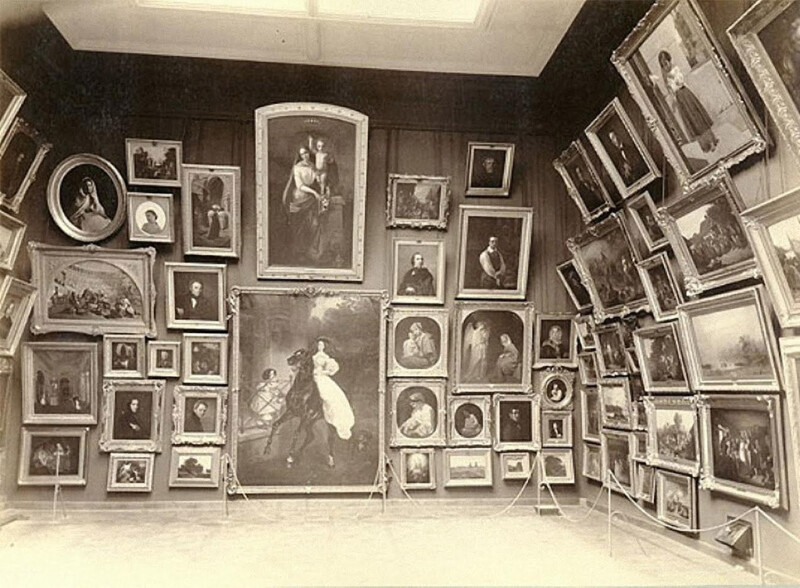
In 1917, after the end of the revolution, the Tretyakov Gallery was nationalized, and then various items belonging to private collections — both Russian and foreign – began to appear in the collection as well.
In the 1920s and early 1930s, several neighboring possessions were annexed to the Tretyakov Gallery, including the Church of St. Nicholas in Tolmachi, which was closed by that time. In 1936, according to the project of architect A.V. Shchusev, an additional two-storey building was built on the north side of the main building. The halls of this bulding were soon included into the main route of the exposition.
During the Great Patriotic War, the exhibits of the Tretyakov Gallery were evacuated to Novosibirsk and Perm. The building itself was damaged during enemy raids. However, most of the halls had been renovated by 1944.
In 1986-1995, the main building in Lavrushinsky Lane was reconstructed. And three years later, the first permanent exhibition of art of the XX century opened in the building of the New Tretyakov Gallery on Krymsky Val.
Interesting facts
Tretyakov’s will specifically stipulated one condition – free entry to the art gallery.
For his generous gift, Pavel received title of nobility from the emperor. However, Tretyakov refused it, saying that he was born a merchant, and will die as a merchant.
The emblem of the Tretyakov Gallery for a long time was the image of its facade according to the drawing of the famous artist Vasnetsov. However, in 2017, the museum got a new logo — the letter T, designed by the ONY design bureau.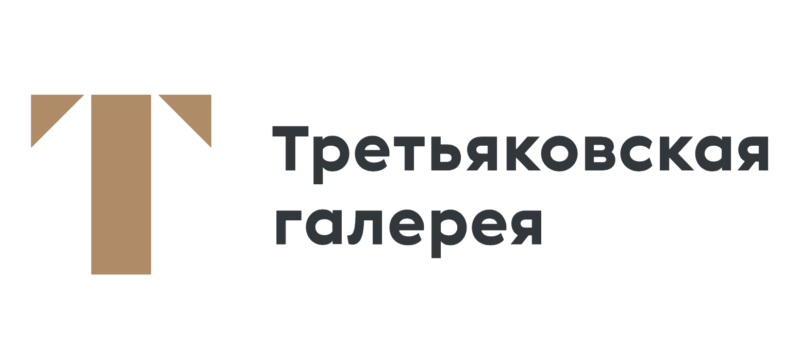
The largest painting presented in the collection is considered to be “The Appearance of Christ to the People”. The painting belongs to the brush of Alexander Ivanov. The masterpiece of the Russian painter has dimensions of 7.5 x 5.4 m. According to historical chronicles, the artist spent twenty years creating the painting.
Behind one of the walls of the halls of the Tretyakov Gallery there is a shaft of a large freight elevator. Using this elevator paintings are delivered from the depository and back. This wall is fixed on large hinges, and if needed, it can be removed — it serves as a door to the elevator. The presence of the structure is not advertised, not to endanger the work.
Today, a statue of Pavel Mikhailovich Tretyakov by sculptor Alexander Kibalnikov is installed in front of the museum building. However, it appeared near the gallery only in 1980. Before that, a sculpture of Joseph Stalin was installed in front of the museum, and its predecessor was the monument of Vladimir Lenin.
Pavel Tretyakov periodically bought paintings prohibited by censorship. The patron was advised not to show such paintings to visitors, so he honestly covered them with a cloth. But this did not prevent the curious from quietly looking behind the curtain. And as soon as the rumor that a new “forbidden” painting appeared in the gallery, the halls literally overflowed with visitors. This is exactly what happened with the painting “Ivan the Terrible and his son Ivan”.
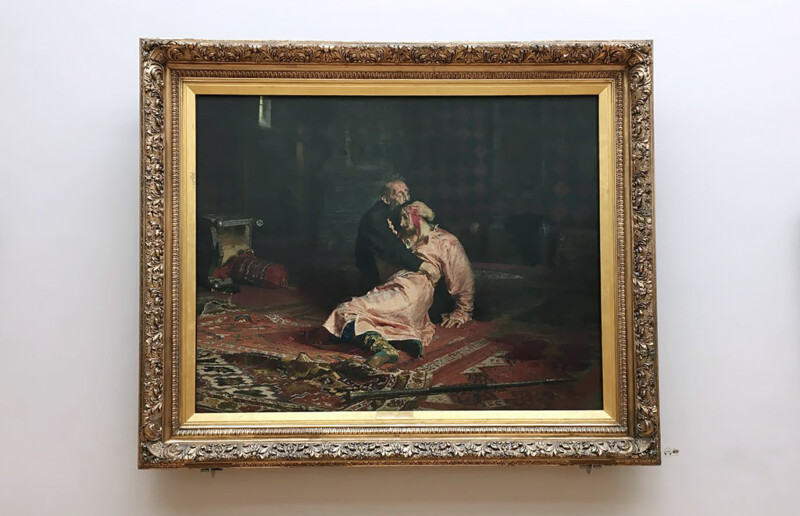
Ilya Repin
“Ivan the Terrible and his son Ivan on November 16, 1581”
1883-1885
Tretyakov strongly refused to place some canvases in his collection. Among them are “The Girl with Peaches” by Valentin Serov and “Portrait of unknown woman”, written by Ivan Kramskoy. Regarding the “Unknown”, Tretyakov said that she was too beautiful and did not look like a real girl. Both of these works came to the gallery after the death of its founder.
One of the most popular events of the gallery was the exhibition of works by artist Valentin Serov, which took place in 2016. It was visited by more than 400 thousand people. There were long queues at the museum, and the Tretyakov Gallery management deployed field kitchens to feed those waiting with hot food.
The Tretyakov Gallery in Lavrushinsky was closed for a total of sixteen years — for two years under Tretyakov, for four years during WWII and for ten years for reconstruction.
The materials translated into English by Vladimir Grebnev


